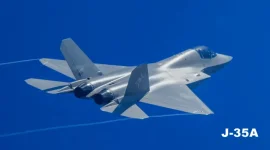- Views: 6K
- Replies: 46
India appears poised to decline offers to join international 6th-generation fighter jet programs, opting instead to concentrate on its own Advanced Medium Combat Aircraft (AMCA) project.
Despite receiving proposals from Germany and Spain to participate in the Future Combat Air System (FCAS) and an invitation from the UK-Japan-Italy consortium to join the Global Combat Air Program (GCAP), India remains committed to its indigenous AMCA.
While official discussions with the UK regarding GCAP have been confirmed, India has not publicly acknowledged the German and Spanish proposals. This suggests a strong inclination towards self-reliance in developing its next-generation fighter capabilities.
The Defence Research and Development Organisation (DRDO) and the Indian Air Force (IAF) have emphasized their focus on the AMCA, a 5.5-generation fighter designed to bridge the gap between current 5th-generation technology and future 6th-generation platforms. The AMCA is expected to incorporate advanced stealth capabilities, supercruise functionality, and cutting-edge avionics.
DRDO asserts that the AMCA will integrate technologies often associated with 6th-generation fighters, such as artificial intelligence, advanced sensors, and low-observability features. The AMCA is slated for initial induction by 2035, with its development providing valuable experience for a full-fledged 6th-generation project post-2040.
The AMCA's design philosophy aims to position it as a “5.5-generation” platform, incorporating significant advancements over existing 5th-generation fighters. This includes features like directed energy weapons and AI-assisted mission management systems.
Although declining to join the FCAS or GCAP programs at this stage, India recognizes the importance of developing a 6th-generation platform in the long term. The AMCA's success is expected to lay the groundwork for future projects, with the development of a 6th-generation fighter anticipated to commence in the 2040s, targeting induction by 2050.


